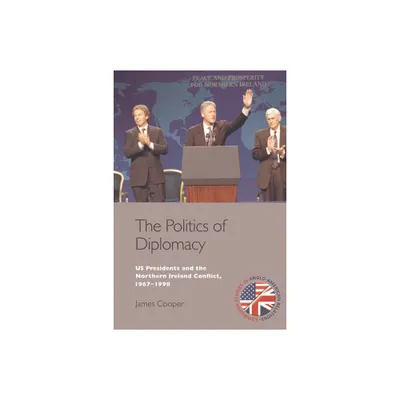Home
The Diplomacy of Modernization: Colombian-American Relations, 1920-1940
Loading Inventory...
Barnes and Noble
The Diplomacy of Modernization: Colombian-American Relations, 1920-1940
Current price: $41.95


Barnes and Noble
The Diplomacy of Modernization: Colombian-American Relations, 1920-1940
Current price: $41.95
Loading Inventory...
Size: OS
*Product Information may vary - to confirm product availability, pricing, and additional information please contact Barnes and Noble
Drawing upon extensive research in the United States, Colombia, and Great Britain,
The Diplomacy of Modernization
examines the evolution of United States foreign policy in Colombia between the world wars, concentrating on the period of the Herbert Hoover and Franklin D. Roosevelt administrations, years generally associated with the formulation and implementation of the Good Neighbor Policy.
Historians of the United States-Latin American policy have concentrated on the giants of the inter-war years – Mexico, Cuba, Brazil, and Argentina. Yet the second-ranking powers such as Colombia are particularly significant for an understanding of the factors which shaped inter-American relations, the objective of U.S. policy, and the impact of a major industrialized nation on a developing society.
By the end of the First World War Colombia occupied an important, though clearly secondary, place in United States-Latin American policy. During the 1920s Colombia was the third- or fourth-ranking trading partner of the United States in South America. Her strategic proximity to the Panama Canal also made her adherence to a pro-United States position an important objective of Washington’s policy, as did the promise of major petroleum reserves that were yet to be exploited. Conscious of these issues and concerned that the spark of nationalism generated by the Mexican revolution would inflame other developing nations in Latin America, United States officials in the 1920s and 1930s re-examined the methods of American diplomacy and gradually moved away from the cruder forms of military intervention, gunboat and dollar diplomacy.
In analysing the commercial, financial, and industrial presence of U.S. interests in Colombia and their diplomatic manifestations, this study suggests the extent to which the United States erected a policy designed to provide primacy for American interests rather than the equality of treatment implied in the terms ‘good neighbor’ and ‘open door.’
The Diplomacy of Modernization
examines the evolution of United States foreign policy in Colombia between the world wars, concentrating on the period of the Herbert Hoover and Franklin D. Roosevelt administrations, years generally associated with the formulation and implementation of the Good Neighbor Policy.
Historians of the United States-Latin American policy have concentrated on the giants of the inter-war years – Mexico, Cuba, Brazil, and Argentina. Yet the second-ranking powers such as Colombia are particularly significant for an understanding of the factors which shaped inter-American relations, the objective of U.S. policy, and the impact of a major industrialized nation on a developing society.
By the end of the First World War Colombia occupied an important, though clearly secondary, place in United States-Latin American policy. During the 1920s Colombia was the third- or fourth-ranking trading partner of the United States in South America. Her strategic proximity to the Panama Canal also made her adherence to a pro-United States position an important objective of Washington’s policy, as did the promise of major petroleum reserves that were yet to be exploited. Conscious of these issues and concerned that the spark of nationalism generated by the Mexican revolution would inflame other developing nations in Latin America, United States officials in the 1920s and 1930s re-examined the methods of American diplomacy and gradually moved away from the cruder forms of military intervention, gunboat and dollar diplomacy.
In analysing the commercial, financial, and industrial presence of U.S. interests in Colombia and their diplomatic manifestations, this study suggests the extent to which the United States erected a policy designed to provide primacy for American interests rather than the equality of treatment implied in the terms ‘good neighbor’ and ‘open door.’


















